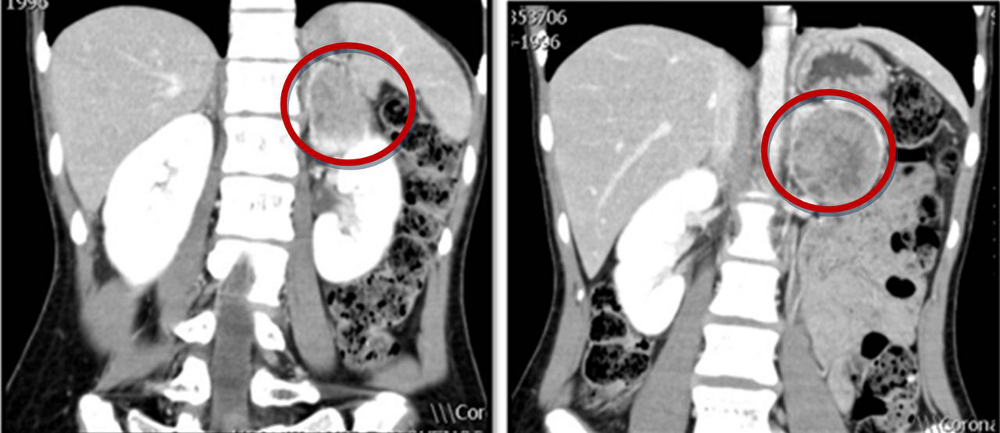Summary
Definition
History and exam
Key diagnostic factors
- presence of risk factors
- headache
- palpitations
- diaphoresis
- hypertension
- hypertensive retinopathy
- pallor
- impaired glucose tolerance/diabetes mellitus
- family history of endocrine disorders
- history of prior phaeochromocytoma
- tachyarrhythmias and myocardial infarction
- panic attacks or a 'sense of doom'
Other diagnostic factors
- orthostatic hypotension
- hypercalcaemia
- Cushing syndrome
- diarrhoea
- fever
- papilloedema
- abdominal masses
- tremors
Risk factors
- multiple endocrine neoplasia type 2 (MEN2)
- Von Hippel-Lindau (VHL) disease
- SDHB, SDHC, and SDHD gene mutations
- neurofibromatosis type 1 (NF1)
Diagnostic investigations
1st investigations to order
- plasma free metanephrines or 24-hour urine fractionated metanephrines and normetanephrines
- genetic testing
Investigations to consider
- FBC
- serum calcium
- serum potassium
- chromogranin A
- clonidine suppression test
- CT scan of the abdomen and pelvis
- MRI of the abdomen and pelvis
- 18F-fluorodeoxyglucose (18F-FDG) PET/CT or somatostatin receptor-targeted (SSTR) PET/CT with 68Ga-DOTATATE tracer
- I-123 metaiodobenzylguanidine (MIBG) scintigraphy
Treatment algorithm
Contributors
Authors
Bridget Sinnott, MD

Professor of Medicine
Medical College of Georgia
Augusta
GA
Disclosures
BS declares that she has no competing interests.
Acknowledgements
Dr Bridget Sinnott would like to gratefully acknowledge Dr Sidhbh Gallagher, a previous contributor to this topic.
Disclosures
SG declares that she has no competing interests.
Peer reviewers
Betul A. Hatipoglu, MD
Clinical Endocrinologist and Research Scientist
Department of Endocrinology, Diabetes, and Metabolism
Cleveland Clinic
Cleveland
OH
Disclosures
BAH declares that she has no competing interests.
References
Key articles
Neumann HPH, Young WF Jr, Eng C. Pheochromocytoma and paraganglioma. N Engl J Med. 2019 Aug 8;381(6):552-65. Abstract
Fishbein L, Del Rivero J, Else T, et al. The North American Neuroendocrine Tumor Society consensus guidelines for surveillance and management of metastatic and/or unresectable pheochromocytoma and paraganglioma. Pancreas. 2021 Apr 1;50(4):469-93.Full text Abstract
National Comprehensive Cancer Network. NCCN clinical practice guidelines in oncology: neuroendocrine and adrenal tumors [internet publication].Full text
Kunz PL, Reidy-Lagunes D, Anthony LB, et al; North American Neuroendocrine Tumor Society. Consensus guidelines for the management and treatment of neuroendocrine tumors. Pancreas. 2013 May;42(4):557-77.Full text Abstract
Plouin PF, Amar L, Dekkers OM, et al; Guideline Working Group. European Society of Endocrinology clinical practice guideline for long-term follow-up of patients operated on for a phaeochromocytoma or a paraganglioma. Eur J Endocrinol. 2016 May;174(5):G1-10.Full text Abstract
Reference articles
A full list of sources referenced in this topic is available here.
Use of this content is subject to our disclaimer
